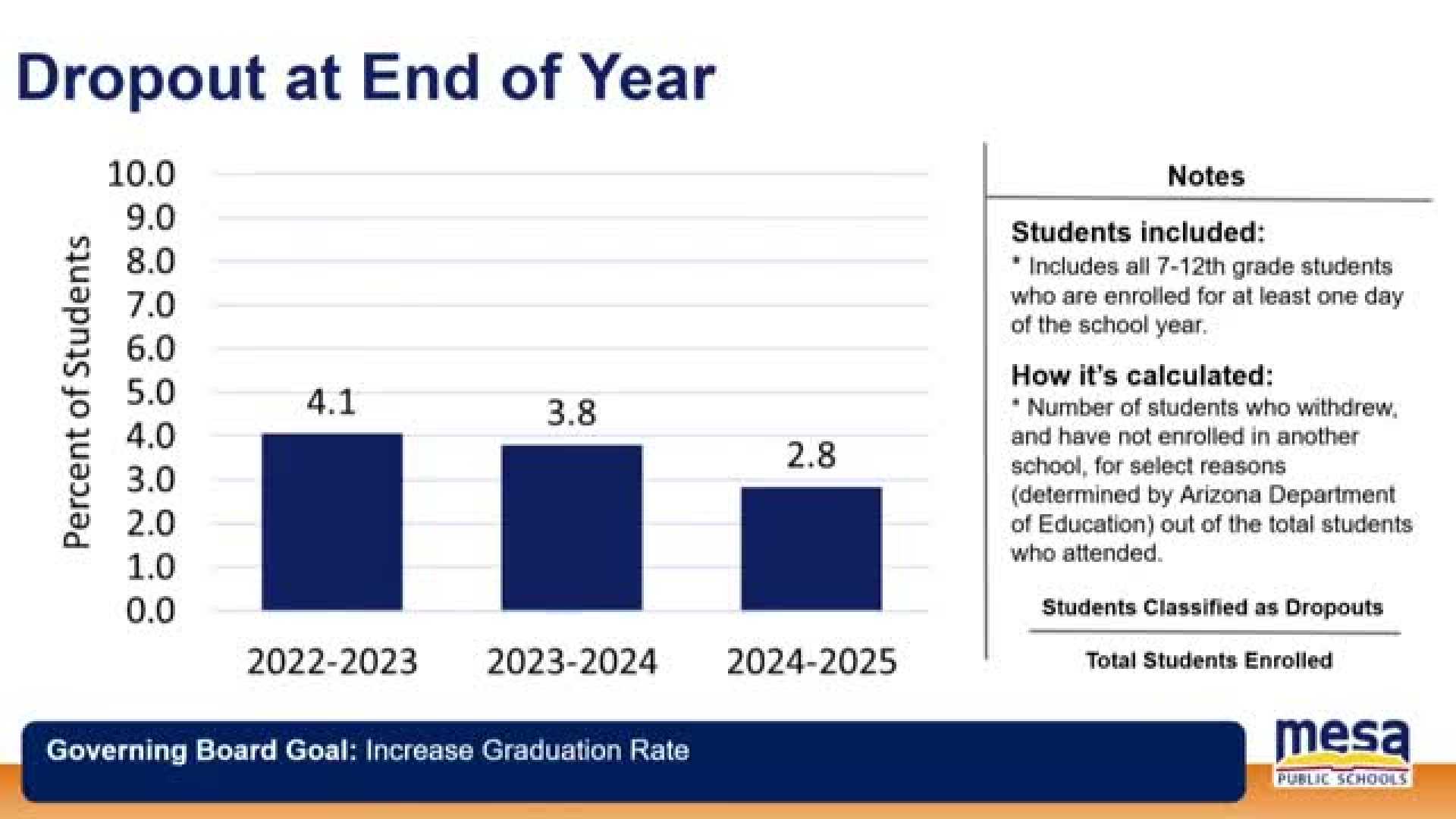Education
Mesa Public Schools Report Decrease in Student Dropout Rates for 2024-25

Mesa, Arizona — Mesa Public Schools has reported a decrease in student dropout rates for the 2024-25 school year, indicating promising progress towards achieving a 90% graduation rate by 2027.
The district, which serves grades 7-12, documented fewer students abandoning their studies, contributing to an overall graduation rate of 81.15% for the 2023-24 academic year.
“Overall, we have been declining over the past three years in our dropout rate,” said Dr. Kristi Glassmeyer, senior research analyst for the district. “So, happy, happy news.” Graduates often refer to dropouts as students who attended at least one day of school but later withdrew without enrolling elsewhere.
During a July 22 Governing Board meeting, Glassmeyer presented detailed statistics, showing a decrease in dropout rates across all high school grades, with declines ranging from 1.4% to 1.8%.
The data also highlighted noticeable improvements among racial demographics. The dropout rate for American Indian and Alaskan Native students decreased from 7.5% to 3.6%. Meanwhile, Black students saw a reduction of 0.5% and Hispanic students’ figures dropped by 1.3%.
White students had the lowest dropout figure at 1.8%, closely followed by Asian students at 1.9%. The rates for students receiving free and reduced lunches also fell to 3.1%, down from 4.3%. Special education students reported a rate of 0.5%, down from 1.1%.
Among the most significant changes was a 2.4% reduction for students with limited English proficiency. Their dropout rate decreased from 7.7% in 2023-24 to 5.3% the following year. “We’ve seen a lot of work with those groups,” Glassmeyer said. “We’re really making very good gains in that population.”
Administrators at Dobson High School and Carson Junior High shared strategies that have reduced dropout rates at their campuses. Dobson’s figure fell from 4% to 2.5%, while Carson’s rate decreased from 3.5% to 3%.
Principal Gabrielle Buckley from Dobson noted that the school improved its tracking systems, particularly for credit-deficient students. They introduced block scheduling, allowing students to earn more credits per semester.
“When we opened up the ability to go from three credits a semester to four, that helped a lot of our students who may have come credit deficient,” Buckley stated. “Getting kids in front of teachers is important for identifying their learning gaps.”
Similarly, Principal Christopher Brunst at Carson emphasized the importance of knowing the students personally. His campus has created a Crisis and Response Evaluation Team, coordinating efforts from various staff members to keep students engaged.
Brunst also highlighted collaboration with the Salt River Pima –Maricopa Indian community, noting that community support has been instrumental in reducing dropout rates among Native American students.
Amid discussions surrounding transportation challenges for students, the CARE Team at Carson ensures that identified students receive the necessary support. The board is considering data tracking for students who withdraw to be homeschooled.
Superintendent Dr. Matt Strom confirmed that the state tracks homeschool withdrawals, ensuring that the correct codes are used to maintain accurate district statistics.












